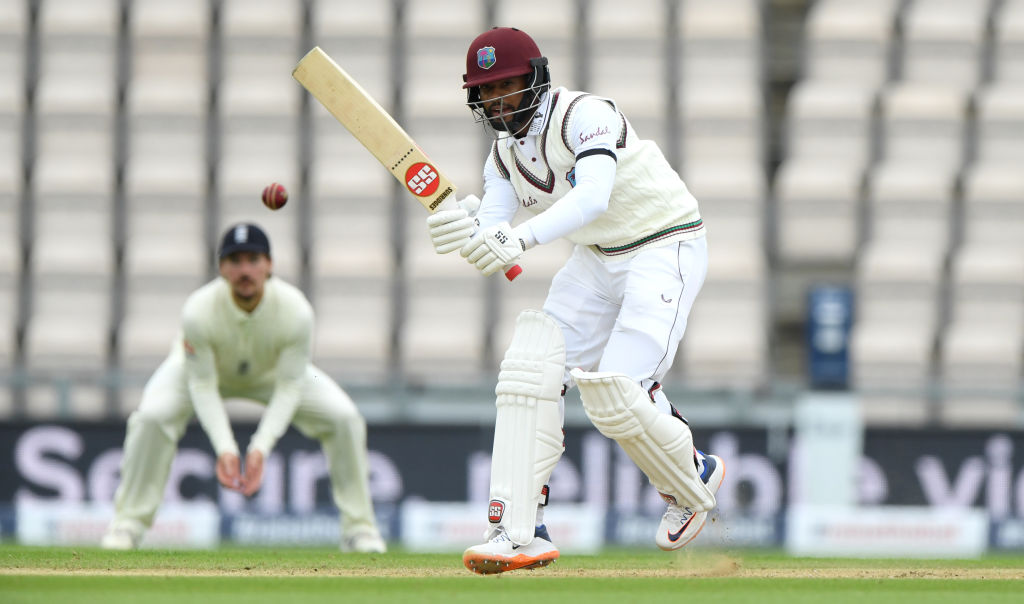Shai Hope needs to dial back in time to resurrect fledgling Test career
‘Impossible, simply impossible. In all of Windies’ cricket history nothing can have been quite so gloriously scatty, unlikely, improbable and, yes, let's go there, as impossible as the victory achieved by Holder's team at Headingley.’ - Mark Nicholas was in awe after an improbable victory in Leeds.

In their glorious history, Windies had secured many memorable victories, most of them ruthless ones, but probably they didn’t have a victory as important to the context and their relevance in World Cricket than the one in 2017. As Jermaine Blackwood removed his helmet and charged down the pitch to hit Moeen Ali for a four, Windies inscribed their name as the winner of the Headingley Test of 2017. The history dawned on them quite vividly.
The historic UK ground had seen Ian Botham and Bob Willis demolishing Australia in what was one of the most serendipitous England wins of all-time. Most recently, Ben Stokes did some Ben Stokes things to miraculously snatch the game away from the Aussies, something that history will fondly remember for a long, long time and would still go “how the heck did he do that!”. The annals of Headingley will also remember a special young man Shai Hope, who in its 130-year long history, became the first to score two hundreds in a first-class game there.
For Hope was more than just a hope for Caribbean isle: that day, he and Kraigg Brathwaite ensured more than a fresh start for their country’s Test cricket - a clean slate. Hope was the star Windies looked forward to and, in then coach Stuart Law’s words, he was ‘the future of West Indies Test batting’. However, almost two and half years down the line, what we have been presented with is a rather different version of that machismo. A version that has since been one of the unlikely white-ball heroes of our times, with an average of 51.39, but in red-ball cricket, has squandered the opportunities in truly bizarre fashion.
From scoring a double-hundred for Barbados against Windward Islands at the Kensington Oval that had caught the selectors' attention to making a patient second-innings 90 to put up a match-winning 188-run target against Pakistan, it was a show of promise for Hope. The context of that innings exploded a few weeks after that as he made 147, putting on 246 with Kraig Brathwaite, to earn West Indies a lead of 169 at Leeds before his unbeaten 118 helped the side chase down the 322-run target with effervescent ease. A classy 62 at Lord's in the next game and scores of 90 not out and 44 against Zimbabwe in the subsequent series made everyone and their grandmother believe that the next Desmond Haynes, if not a Shivnarine Chandrapaul, was not far away. Then, how have we arrived at this dichotomy?


Statistically, there is a pattern to his inconsistency in the red-ball format that is so revealing to the naked eye. Of the 36 matches he has played so far, Hope has batted 24 times at No.4, a position where he scored that first innings Leeds century, and 6 times at No.5, where he scored the match-winning ton in the same match. But since the ODI wicket-keeper has been promoted to No.3 to satiate the demands of Test cricket, it has been a sorry state of affairs.
In the 16 innings he has played at No.3 so far, Hope has only been able to score 278 runs - which is only 13 more than what he scored in that Leeds game alone. The Barbadian has been expected to carry the same role Joe Denly is doing for England at the moment - blunt the bowling attack - which he did, but the dwindling returns have ensured that Windies have been caught off guard most of the times, thereby painting a sorry picture of the batting unit.
“Red-ball batting is definitely my favourite part of the game but the runs and the stats aren’t exactly where we want them to be, but I’m working towards that. I can’t pinpoint anything (wrong) at this stage, because I wouldn’t say my preparation has changed. I don’t think it’s anything major when it comes to my technical side of the game. There are certain things you can tweak, as you go along. I would probably say it’s more of a mental thing. Hopefully, I can turn it around and move on from there,” Hope had said ahead of the Test series.
The first Test performance, however, bore a strong testimony to his never-say-die attitude and old-school batting ability when he purposefully grounded the English bowlers for a well-compiled 64-ball 16. But once he seemed all set, the lapse in concentration came to the fore as he was caught plumb by Jofra Archer, only to be given a chance by the TV review that found Archer crossing the holy line. It didn’t take long for him to lose to the same old formula, though, as Dom Bess extracted a nothing shot to bring a calamitous end to the proceedings. Tragedy repeated all over again.
Every time Hope soars in the 50-over cricket, adhering to all those traditional values which set up the base for more glorious batsmen like Shimron Hetmyer, Nicholas Pooran, and Kieron Pollard, the frustration in the red-ball format mounts to a different level. From Headingley to Southampton, this has been a long wait and the onus is on everyone in the backroom to bring a full stop to that dilemma and provide him wings to soar higher and shine brighter. Then only we might see the truncated world being able to see the full potential of a star who we know can deliver big time.

Comments
Sign up or log in to your account to leave comments and reactions
0 Comments